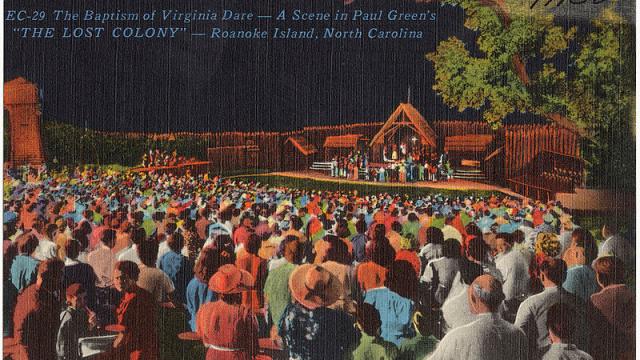CROATOAN. The word was found written on a fencepost in the lost colony of Roanoke, and it still intrigues us after 425 years. But this 16th century settlement is more than a legend. It’s also the subject of archaeological and historical investigations that are now starting to yield answers.
The search for the island’s so-called lost colony is uniquely American. Groups dedicated to searching for the lost colonists are diverse, ranging from scientists to weekenders and organised amateurs who have turned the search into a tourism opportunity, boat rides included. Roanoke has been immortalised in ghost stories, and played a role in the colonial tension that underpins so much of US culture. Facebook groups are dedicated looking for the DNA of the lost settlers in modern-day Americans, possibly descended from the marriage of remaining settlers to Indians, thanks to ubiquitous genetic testing.
Over the past few years, the momentum behind the search has increased, spurred by recent technological advances in archaeology. As we learn more about it, the disappearance of Roanoke’s colonists has become an incredibly compelling moment in US history — one that involves great scientists and mathematicians, extreme weather events worse than anything we’ve seen today, and a far more complex set of events than a group of 16th century Europeans simply vanishing into thin air.
Site X
Many recent discoveries about Roanoke have been spurred by the First Colony Foundation, a non-profit founded 11 years ago in North Carolina. In 2012, a member of the foundation noticed two patches in a 425-year-old map of the coastline painted by John White, the leader of the colonists. In 1587, White went back to England for supplies and returned to find only the remains of the Roanoke colony and the word “CROATOAN.”
His map of the area, which is in the British Museum, had never been examined using modern technology like x-ray spectroscopy, infrared imaging, and raman spectroscopy. First Colony asked the museum to take a closer look at the document — known as the Virginea Pars map — and the new analysis revealed the biggest break in the search for the lost Roanoke colonists in centuries.
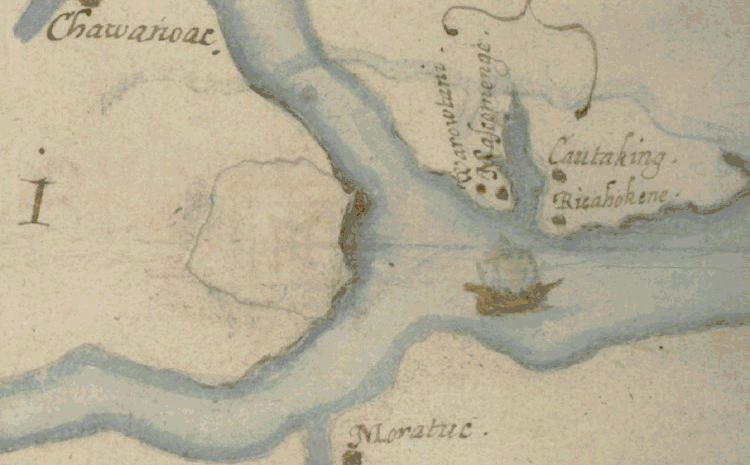
A new analysis of John White’s 1580s map of Virginia revealed a hidden marking beneath a patch. British Museum.
Beneath one of White’s patches was a blue-and-red symbol marking the location where Roanoke’s colonists tried to resettle. It’s about 60 miles west of Roanoke itself. This interpretation of the map makes sense because it fits with White’s own writings, where he describes a plan to move the colony “50 miles into the maine” once he got back from England. Could the colonists have moved during the years he was away? Perhaps they split up, with some moving to the fort’s marked location, while the reference to CROATOAN was a signal that others had moved to nearby Croatoan Island (today known as Hatteras Island) to await White’s return.
And so Site X was born: A rough approximation of the location of this mysterious hidden fort marking.
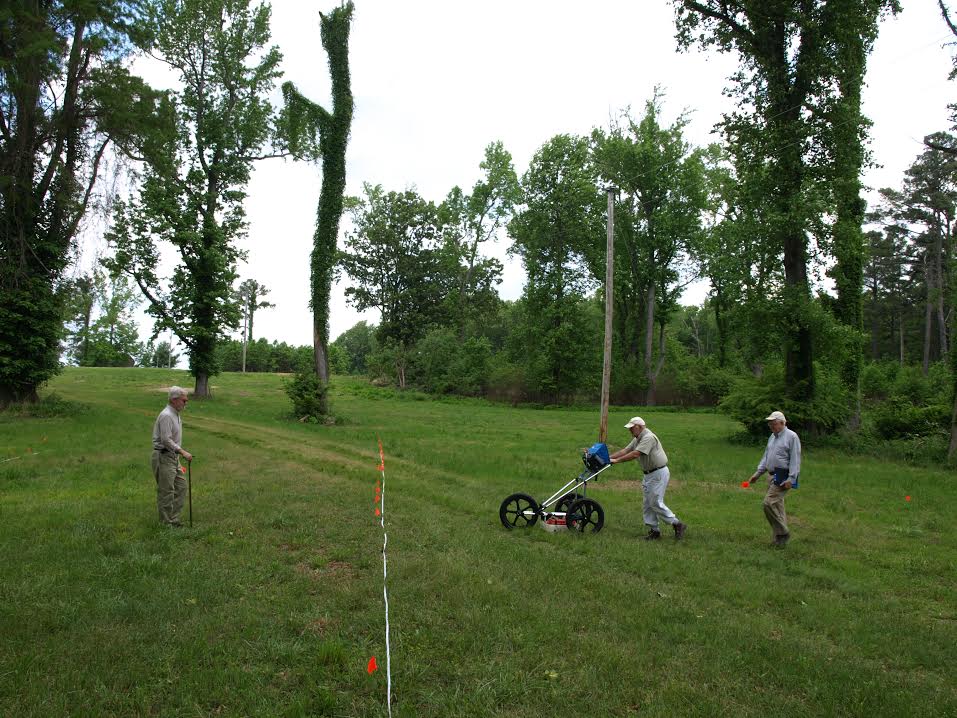
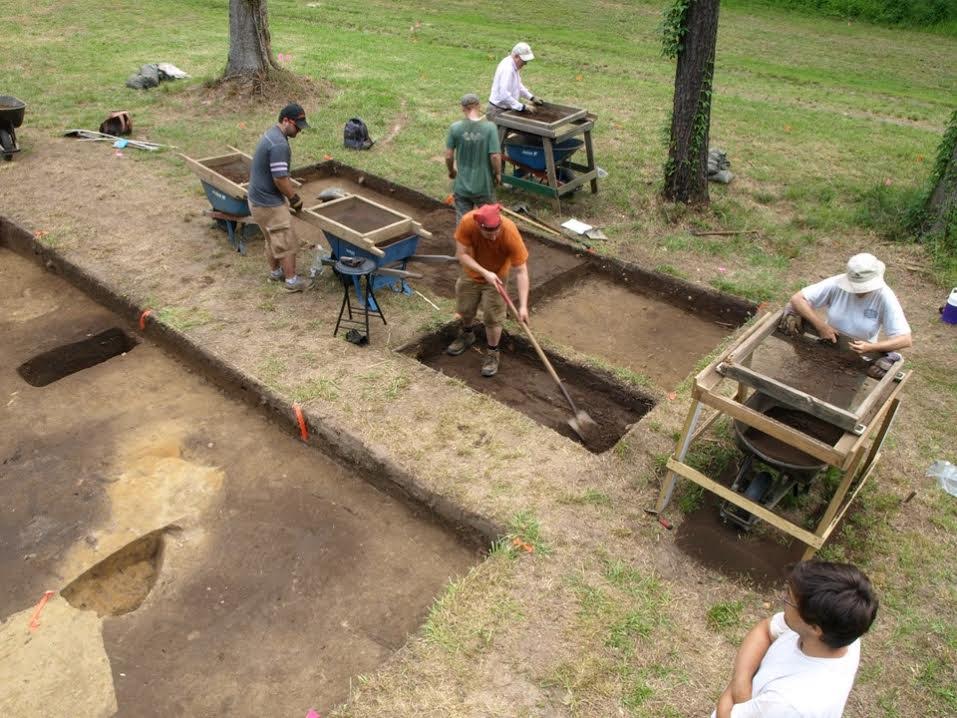
Archaeologists use ground-penetrating radar to determine dig sites, below. First Colony Foundation.
It’s here that archaeologists from First Colony have been digging for the past two years. In August, the foundation announced that it had found remarkable archaeological evidence of 16th century Europeans at Site X. Among more than 30 artifacts recovered here (including artifacts like nails and ceramics from both Indian and European sources that date from well after the Roanoke era) they found shards of a type of ceramics called Surrey-Hampshire Border ware. These helped researchers pin a date on the site.
Border ware, as it’s often called, was common among settlers of the Virginia company. But when the company failed in 1624, no new colonists were bringing the stuff to the area. Thus, finding it at Site X is a pretty good indication that at least some of the artifacts found dated from the time of the Roanoke colonists.
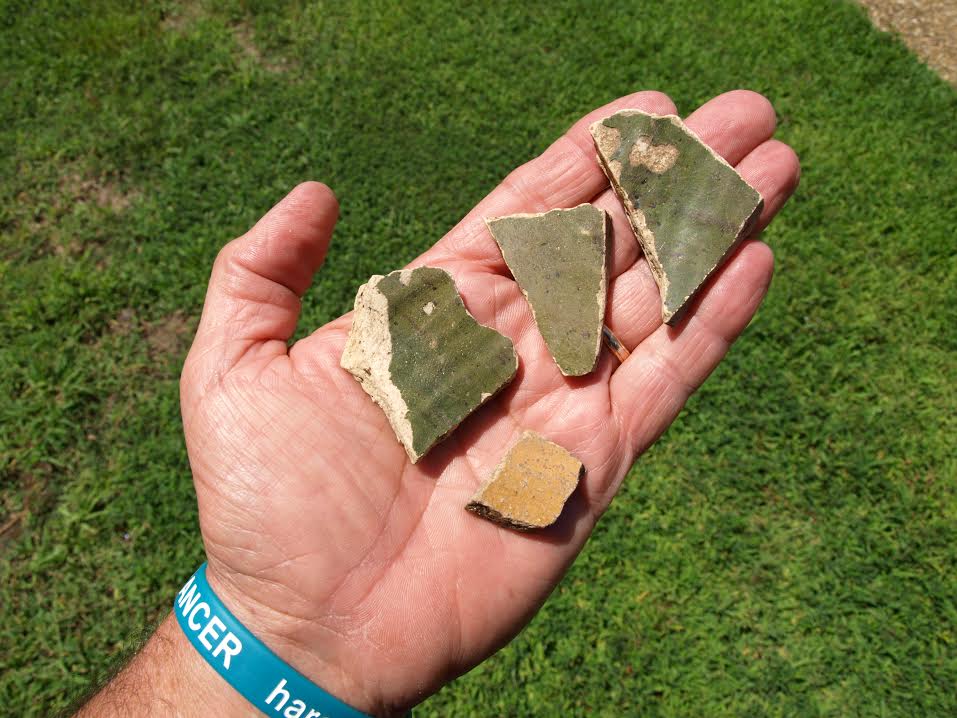
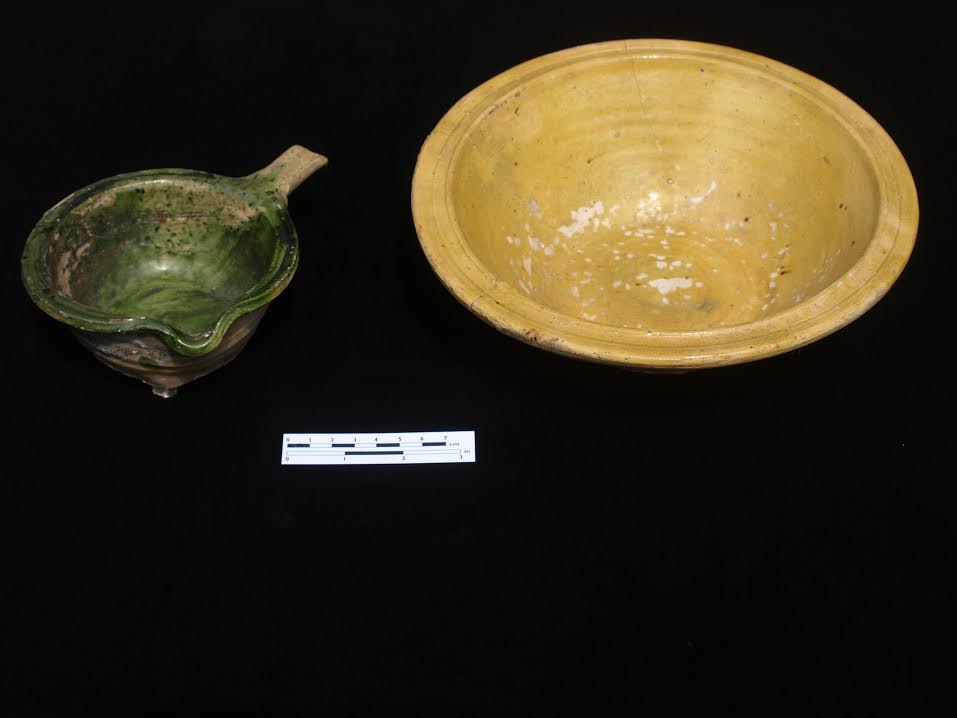
Border ware. First Colony Foundation.
The shards, along with a few other artifacts and the new map findings, “suggest the likelihood that a small number of Roanoke colonists were present at Site X for an undetermined length of time,” the archaeological brief concludes. The response to the news has been “overwhelming,” said First Colony’s Nick Luccketti, an archaeologist on the dig. It could be proof that Roanoke colonists survived beyond the confines of the island where they left their last known trace of existence.
“I think it’s a very exciting possibility,” said New York University historian Karen Ordahl Kupperman, whose book Roanoke: The Abandoned Colony is a lynchpin for modern scholarship on Roanoke. Kupperman has studied Roanoke for decades, developing a hypothesis that the colonists may have broken up into distinct groups and assimilated into local Indian communities (Croatoan was the name of an Indian group who lived on Roanoke, as well as the name of the present-day Hatteras Island).
There’s also a good chance we’ve figured out what drove the settlers from their island. “They knew that Roanoke wasn’t a good place to build a settlement,” Kupperman says. They were painfully aware that there was little fresh water available to the colony — especially not during a historic drought.
The Terrible Drought
As Kupperman explains in her book, another thread in the Roanoke saga deals with drought — specifically, a “mega-drought” seemingly caused by a horrible El Nino.
In 1998, an archaeologist at the College of William and Mary named Dennis Blanton published a paper in Science reporting the results of a tree ring analysis of some very, very old bald cypresses in Virginia. Blanton himself described his findings as “incredible:” The worst drought in 800 years took place in the three years after the colonists arrived at Roanoke. The absolute worst season occurred in 1587, right after White left for England.
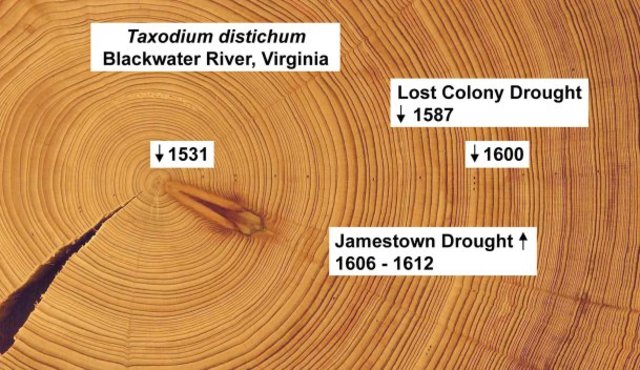
Image: PBS
“The Roanoke and Jamestown colonies have both been criticised for poor planning, poor support, and for a startling indifference to their own subsistence,” wrote Blanton. “But the tree-ring reconstruction indicates that even the best planned and supported colony would have been supremely challenged by the climatic conditions of 1587-1589 and 1606-1612.” Further south, Spanish colonists were suffering, too. In fact, a Spanish colony on what is today known as Parris Island, in South Carolina, was also abandoned due to drought in 1587.
“It was the worst possible time to try to start a colony,” says Kupperman. Even the Indians, who were well-established on the Outer Banks, would have suffered — and since the colonists needed to trade with them for food, the Europeans would have only made things worse.
Could this severe weather have caused the demise of the colony? We will probably never know for sure. But this unprecedented drought could have spurred the colonists to move towards Site X, seeking better water sources and farming conditions.
A Lost Era of Renaissance Science
Oddly, Americans’ obsession with the vanished colonists has led to a kind of historical amnesia about the legacy of Roanoke — at least beyond the mystery.
As Kupperman points out, before Sir Thomas Ralegh (or Raleigh as it is often spelled) organised the Roanoke colonists, he sent two other missions to the New World. One, which began in 1585, brought some of Europe’s best scientific minds to North America. Ralegh organised the 1585 expedition to survey the region for England, and he sent people like Thomas Harriot, then a young mathematician, and Ralegh’s assistant, Joachim Gans, a German metallurgist, and of course John White, the eventual leader of the Roanoke colony, the discoverer of its disappearance, and an avid watercolorist.
Together, the trio carried out what Kupperman calls “major scientific work” in the New World.
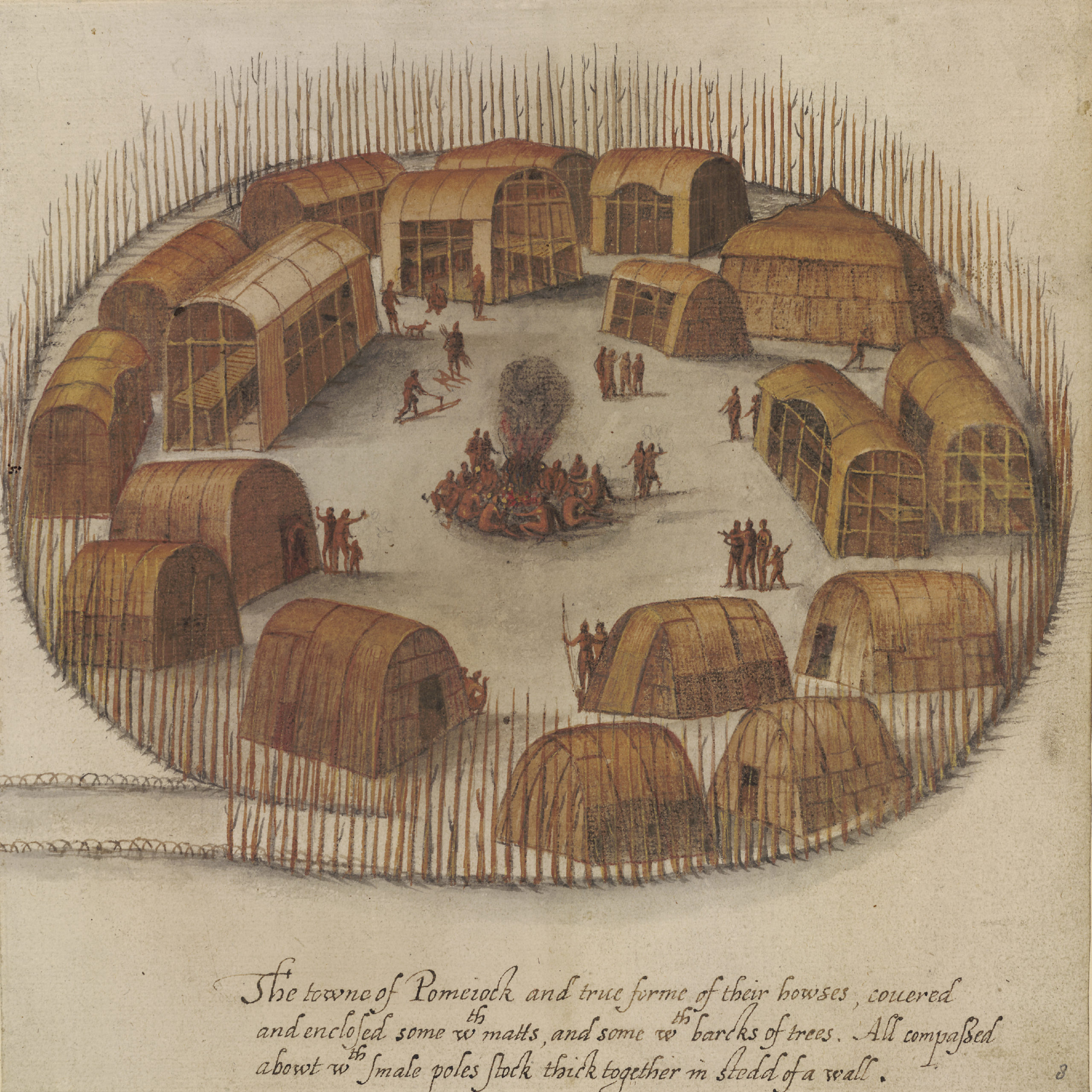
“The towne of Pomeiock,” by John White. Image: the British Museum.
Gans has been called “the first technologist or material scientist in English America.” He was an expert in mining, and immediately set up a workshop to examine local rocks for precious ores. The metal-flecked remains of his lab, which Harriot used for scientific experiments as well, were uncovered by archaeologists on Roanoke in the early 1990s.
Why did Ralegh want a metallurgist on his crew? Keep in mind, this was a mission that was meant to bring back information about the resources for the taking in this New World. Resources like metals and minerals — which an expert like Gans could identify — would provide proof that a colony was worth supporting.
Then there was Thomas Harriot: A polymath whose discoveries rivaled those of the most famous scientists of his day, but weren’t well-known until this century. Most of his work remained unpublished — perhaps because he was suspected of atheism, Kupperman suggests — but in our time, he has been revealed as remarkably prescient. Not only did he make major breakthroughs in optics, but he is now widely thought to have been the first person to draw a picture of the moon while observing it through a telescope — before even Galileo.
As his papers have been rediscovered over the past 100 years, Kupperman says, “he’s now considered up there with Keppler and Galileo and the major Renaissance scientists.” Besides being a prolific scientist, Harriot also gave us our most vivid look at this new world. One of the few things he did publish was his account of the mission, A Briefe and True Report of the New Found Land of Virginia. His research was bolstered by his knowledge of Algonquin, which he learned from two Algonquin leaders who journeyed back to England with the first Virginia expedition.
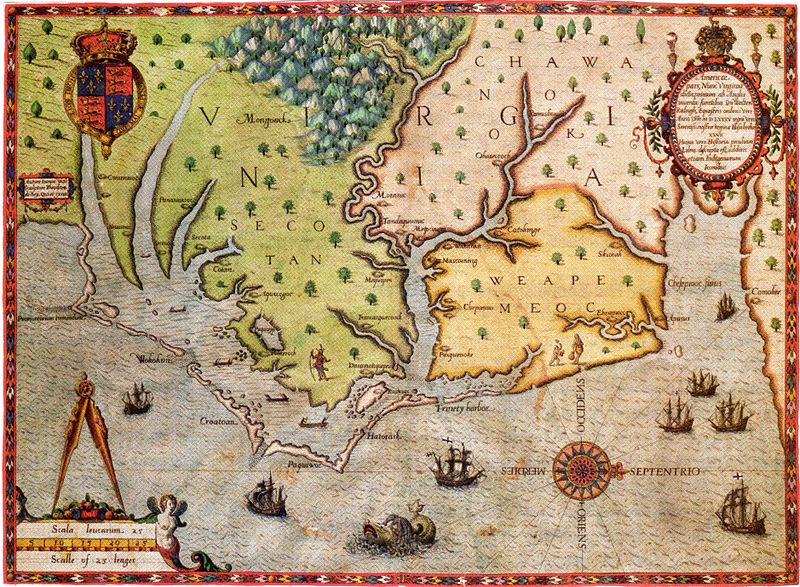
“The Carte of All the Coast of Virginia,” a map that was engraved by Theodor de Bry but based on John White’s own map, published in Thomas Hariot’s A Briefe and True Report of the New Found Land of Virginia.
And then there was White, arguably the most lucid example of this historical amnesia surrounding Roanoke. Most of us know White in one way: As the man who found the abandoned colony. His discovery of the word CROATOAN was, for centuries, all the evidence we had of the colony’s fate. White was also the grandfather of Virginia Dare, the first English child born in the US. Dare was numbered among the lost colonists, and her name that has inspired its own genre of ghost stories tied to this history of the region.
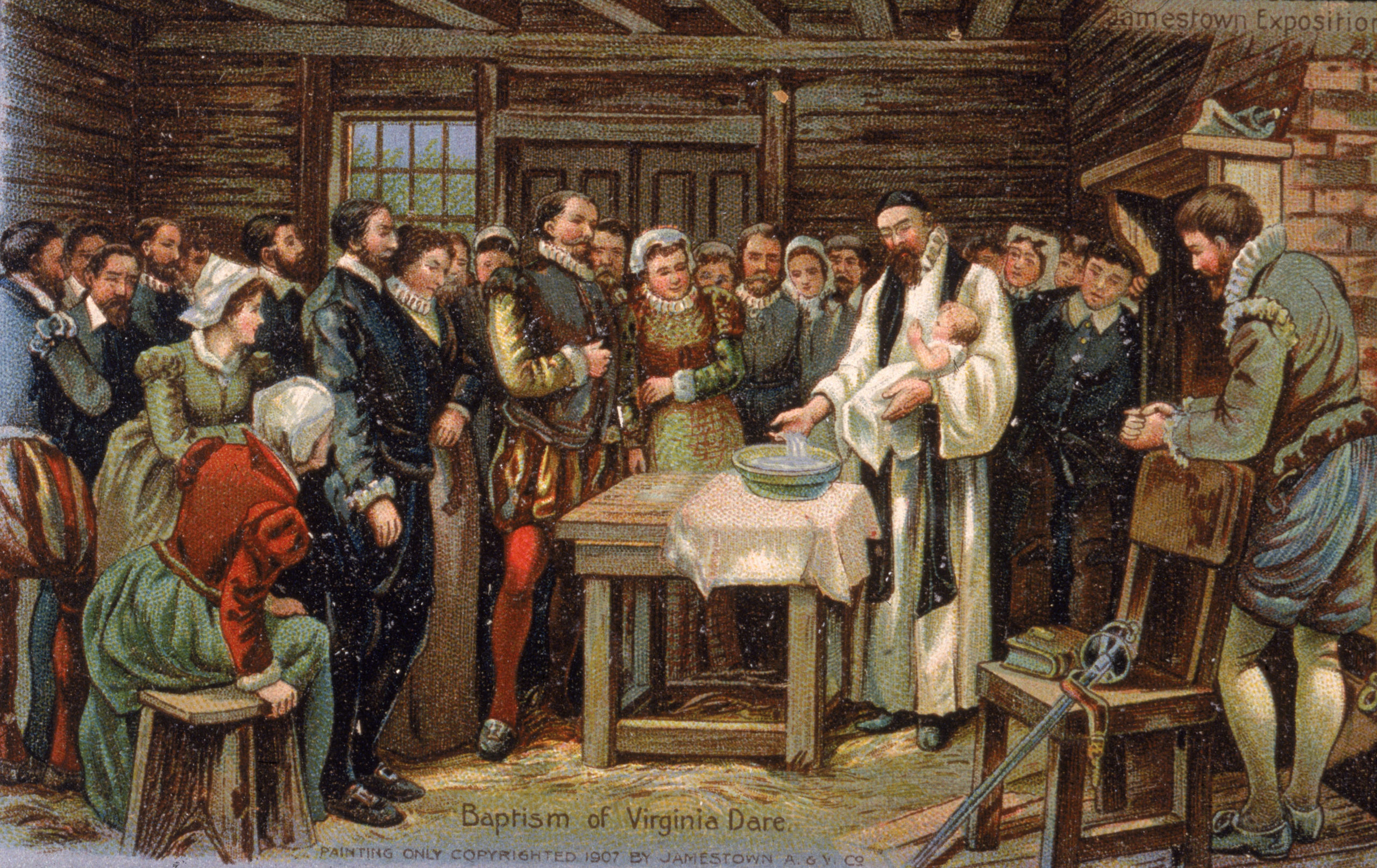
Hulton Archive/Getty Images
But White was also an artist, and his work represents some of the only visual documentation of Indian life in sixteenth century America. Part of his role on the mission was to capture the Indians’ way of life. His paintings are vivid, precisely detailed, and give us a glimpse of Indian farming, dress, social conventions, and more. But they also show us how the Europeans interpreted their customs.
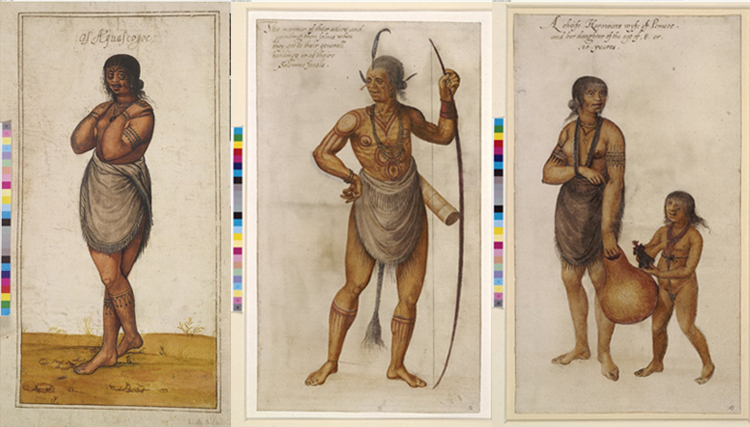
Images: the British Museum.
75 paintings by White were shown at the British Museum in 2007, rekindling interest in the work of both White and Harriot once more. They are “an incomparable record of America’s natural resources and native society as they were when Old and New worlds met,” as Kim Sloan put it in her introduction to the exhibition’s companion book. “We have no picture of Jamestown except for a rudimentary triangle on a map, nor do we have a representation of Plymouth or Boston,” Kupperman writes in her own book. “We all owe a debt of gratitude to John White and to Sir Walter Ralegh, who recognised the necessity of sending a painter and a scientist to his American colony.”
Yet those incredible images, and what they meant for Europe, are pretty much forgotten alongside the accomplishments of those first colonists — at least outside of academia. “It’s really important,” Kupperman says, yet “it kind of fades away.”
The amnesia effect feels familiar, considered in context with the way we consume information today — when nuggets of mystery explode into mushroom clouds of sensation. Of course, there’s nothing wrong with being excited or intrigued by the “lost colony,” but the ghost story is, in many ways, less exciting than the fact that this 500-year-old mystery is beginning to unravel thanks to technological leaps forward and clever historical re-readings of evidence long forgotten.
It’s strange to think that as we get further away from a discrete event in time, our odds of understanding it get better. The forward march of technology is responsible for the biggest Roanoke breakthroughs of the past two decades.
“When I was just starting out, an archaeologist told me that the best practice is to leave half of the site un-dug,” Kupperman recalls. “They didn’t have ground penetrating radar 50 years ago, and who knows what they will have that will allow them to survey large areas and find evidence in the future.” As to the First Colony Foundation’s latest finding, the organisation plans to continue the search and test their hypothesis that Roanoke’s legacy extended far longer than previously thought. For now, “what limits our research is ability to raise funds,” as Luccketti told me. Plenty more soil remains to be searched, and down the road, it’s entirely possible that cheaper, better technology will make that search a little easier and a little cheaper.
Our collective obsession with the lost colony is also what has spurred its continued study — in some ways, the tall tale is an essential part of the real story. So piece by piece, the puzzle of Roanoke has become more complete over the past century. And it’s likely the most important pieces are yet to come.
Lead image: Wikimedia Commons
